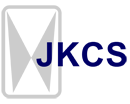Tutorials
|
Building Enterprise applications with Axis2 Deepal Jayasinghe (WSO2 inc.) Apache Axis2 is blazing the trail by being a clean and extensible open source Web services platform. The architecture of Axis2 is highly flexible and supports many QoS functionalities such as reliable messaging and security. One of the most desirable features of Axis2 is the ease of use for developers. It includes a new deployment mechanism, a new client API and pluggable data binding frameworks. Axis2 can also be extended easily through modules, the new archive based extension mechanism. In recent performance tests, Axis2 came up high when compared with its predecessor Axis1, by 4-5 times. This is a hands on tutorial focused on leveraging Apache Axis2 to build enterprise applications. It will cover how Axis2 is used in the production environment, with advanced examples of using handlers , modules and services. Important topics such as embedding, security, reliable messaging, Spring support and scalability will also be discussed in-depth by walking through a real world use case. The tutorial aims to face head on, practical issues faced by users when dealing with real world applications. |
|
Groovy and Grails Tutorial Harshad Oak (Rightrix Solutions) A session about the open source Groovy (groovy.codehaus.org) scripting language for the Java platform and the Grails (grails.org) framework. Both are rapidly growing in popularity and bring unheard of Rapid Application Development (RAD) features to the Java world. Session Highlights: * Introduce Groovy. Discuss the origins and need. * Demonstrate Groovy features. * Web development with Groovy: Introduce Groovlets and GSP. * Grails Features and Architecture: Highlights and working of Grails. * Grails Installation. * Developing a sample grails application: A grails application that will demonstrate features and simplicity of the framework * Customizing Grails for real world applications * Deploy / Run the application on a J2EE server * Conclusion. |
|
Introduction to the Apache Web Server Rich Bowen (Asbury College) An overview of the Apache Web Server, from installtion through administration, including security, performance, CGI programming, URL mapping, and a variety of other topics. While few topics are covered in depth, this introduction is comprehensive and gives an idea of what things are possible with the Apache Web Server. |
|
JSF and Apache MyFaces in Action Ernst Fastl (Irian GmBH) JSF has reached reality. Several frameworks and component libaries are already existing. This tutorial shows you a best of breed mixture. We cover the basic concepts of JavaServer Faces technology. After that, you build your first web application using JSF. We introduce lots of custom components from Apache MyFaces - an open source implementation of the JavaServer Faces specification - which will be integrated step-by-step into your web application. MyFaces contains cool extra components like calendar, upload, tree and AJAX-based widgets, to name only some. Advanced stuff like Portlet integration, usage of Struts Shale, Facelets and Spring integration are discussed as well. Attendees will get a very practial overview of what is possible with JSF today. |
|
Lightning Talks Danese Cooper (Intel Corporation and Open Source Initiative) One of the ways FOSS spreads is through direct advocacy, but many FOSS participants are lacking in compelling presentation skills. Lightning Talks are a way to hone presentations skills while having a bit of fun. Lightning Talks are now a feature of many FOSS conferences worldwide. This tutorial will offer useful and practical information on how to give a compelling talk. Tutorial participants will have an opportunity to give a Lightning Talk and will be given private feedback. |
|
Portlet development with JSR-168, Apache pluto and jetspeed Santiago Gala (University Francisco de Vitoria) Portals provide standardized delivery of personalized and aggregated content. Portlets are the key to developing portals, and JSR-168 provides the first standard Portlet API for Java developers. This specification gives developers the same ability to build a common marketplace that the Servlet Specification provided for server-side web components. Presentation will include coverage of the standard API, examples of Portals to inspire attendees, use of Pluto/JetSpeed2, and some vendor extensions as permitted by JSR-168. Note: This tutorial will be an interactive tutorial. Attendees should bring a laptop with either USB or CD-ROM support, preferably with a current version of Apache Jetspeed-2 pre-installed, and be prepared to develop Portlet code throughout the course of the workshop. |
|
Securing J2EE Applications in Apache Geronimo Vamsavardhana Reddy Chillakuru (IBM India Pvt. Ltd.) Apache Geronimo is a J2EE1.4 Certified J2EE Container. Security has always been a concern of high priority in application development, and with increase in complexity of applications the task of securing the same has become even more complex. While the J2EE specification and the Java Authorization and Authentication Service (JAAS) provide a step in the right direction, every application server vendor is free to implement container security differently. In this tutorial we see how applications can be secured using the features provided in Geronimo. The following topics will be covered in this tutorial with supporting step-by-step examples: o Creating different security realms viz. PropertiesFile realm, Database realm, LDAP realm, CertificatePropertiesFile (based on Digital Certificates) realm and prerequisites for each realm. o Creating a security realm based on a custom login module. o Making security realms as Server-wide or application scoped. o Illustration, using sample applications, of securing Web/EJB/EAR applications using the security realms. After completing this tutorial, the audience will be able to create various security realms provided by Geronimo and create necessary deployment plans to secure their applications using these realms. |
|
Web Application Security Bootcamp Christian Wenz (Hauser Wenz Partnerschaftsgesellschaft) Many people think that certain server web languages are inherently insecure, since security vulnerabilities in applications driven by these languages are reported on a regular basis. However the actual problem is not the lauguage, but insecure code written in it. This tutorial provides you with best practices to write code that is as secure as possible. You will see various attacks and of course countermeasures. We will also cover secure server configuration. And although different languages offer different security features, a common understanding of standard attacks and security vulnerabilities is a must to write secure web applications — in any language. |

















